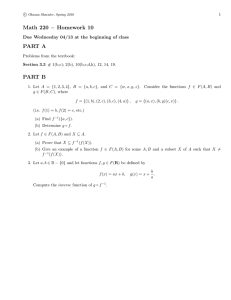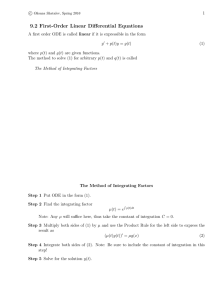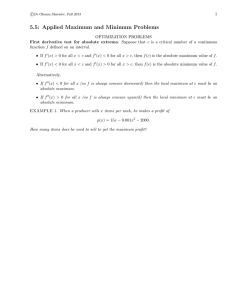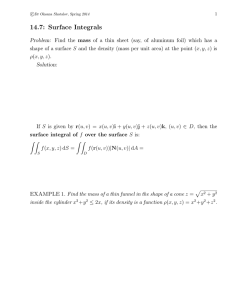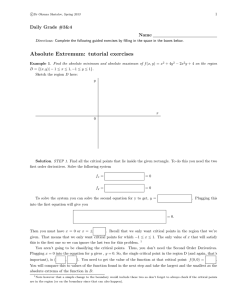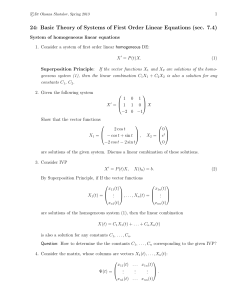Document 10582940
advertisement
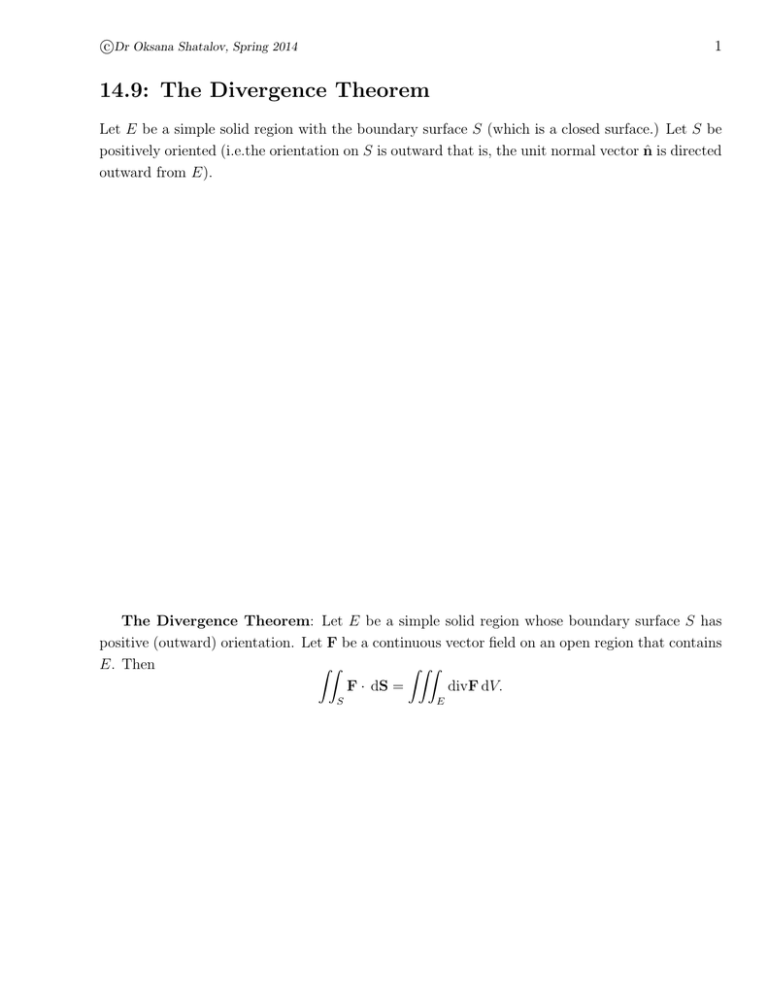
c Dr Oksana Shatalov, Spring 2014
1
14.9: The Divergence Theorem
Let E be a simple solid region with the boundary surface S (which is a closed surface.) Let S be
positively oriented (i.e.the orientation on S is outward that is, the unit normal vector n̂ is directed
outward from E).
The Divergence Theorem: Let E be a simple solid region whose boundary surface S has
positive (outward) orientation. Let F be a continuous vector field on an open region that contains
E. Then
ZZ
ZZZ
F · dS =
divF dV.
S
E
c Dr Oksana Shatalov, Spring 2014
2
EXAMPLE 1. Let E = {(x, y, z) : x2 + y 2 ≤ R2 , 0 ≤ z ≤ H} . Find the flux of the vector field
F = h1 + x, 3 + y, z − 10i over ∂E.
REMARK 2. If F =
Dx y z E
, ,
then
3 3 3
c Dr Oksana Shatalov, Spring 2014
3
EXAMPLE Z3.Z Let E be the solid bounded by the paraboloid z = 4 − x2 − y 2 and the xy-plane.
3
Evaluate I =
x , 2xz 2 , 3y 2 z · dS if
S
(a) S is the boundary of the solid E.
(B) S is the part of the paraboloid z = 4 − x2 − y 2 between the planes z = 0 and z = 4.
c Dr Oksana Shatalov, Spring 2014
4
ZZ
curlF · dS if S is the boundary of
EXAMPLE 4. Evaluate I =
S
(a) ellipsoid E =
x2 y 2 z 2
+ 2 + 2 ≤ 1 and F =
a2
b
c
(b) an arbitrary simple solid region E and F is an arbitrary continuous vector field.
;
